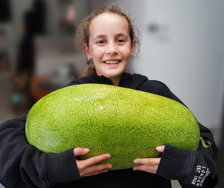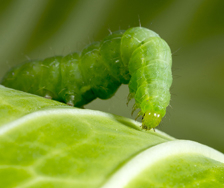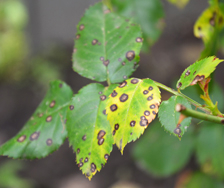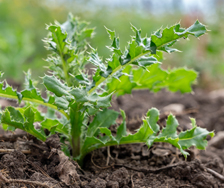Yates Account
Join now
Create a Yates account today!
Sign up to join the Yates Garden Club for monthly e-mails packed with seasonal inspiration, tips for success & exclusive promotions.
Plus if you’re a Garden Club member you can take part in the Yates Growing Community - a blog to share successes, get advice & win prizes in fun challenges along the way!

Forgot password
Enter the email address associated with your account, and we'll email you a new password.
Phytophthora infestans

The first warning symptom of late blight on tomatoes - lesions on leaves.
What is Late Blight?
Although it's often described as a fungal disease, Late Blight is an Oomycete, not a fungus. This class of organisms shares some characteristics of fungi, but also has similarities to algae. It spreads via spores, which are often wind-blown, or splashed onto neighbouring plants by rain.
Late blight prefers humid conditions, between 15-24°C. The spores require leaves to remain wet for 8 hours to infect a plant, so the risk of late blight is highest during rainy periods when plants don't get a chance to dry out. The disease spreads from plant to plant very rapidly in favourable conditions.

An advanced late blight infection on tomatoes.
Symptoms
Tomatoes
Tomatoes are very susceptible to late blight. Leaves develop damp-looking black-brown rotted areas (lesions) that rapidly expand to collapse and shrivel the entire leaf. In humid conditions, downy fungal growth can be seen on the undersides of leaves, around the infected areas.
Watery brown lesions can also form on stems. This progressive cell death destroys the plant in a matter of days.
Infected tomato fruit develop large watery blotches, which turn dark brown and eventually rot the fruit.

Early symptoms of late blight on a potato plant.
Potatoes
Large brown watery blotches form on stems and leaves, typically at the leaf edges. These lesions rapidly grow and often cause the entire leaf to die.
In humid conditions, downy fungal growth can be seen on the undersides of leaves, around the infected areas. If left untreated, the blotches will continue to spread and can kill the plant in a matter of days.
Infected potato tubers will usually develop sunken areas on the surface, that are reddish-brown underneath. Eventually the infected areas rot through and spoil the entire spud. If infected close to maturity potatoes might look unblemished, but they tend to rot quickly in storage.

Infected potatoes usually won't grow to full size.
How to Protect Your Plants
Late blight is easier to prevent than treat. The pathogen can be denied entry to the plant if you spray regularly with a film of protective fungicide, like Yates Liquid Copper.
When you see symptoms, apply a fungicide immediately to stop the disease from spreading to your other plants. With late blight, speed is the key to saving your harvest! While conditions remain humid, keep repeating applications to all your plants, using the spray interval specified on the fungicide label. Ideally, remove diseased plants and bin (or burn) them. Even if your infected plants pull through after a fungicide treatment, they're unlikely to give you a yield worth keeping.
Remove dead or damaged leaves and make sure there’s good air movement around the plants.
To reduce the chances of infection, avoid overhead watering and regularly inspect your plants in the humid conditions favourable to the disease.

Late blight lesions on a tomato stem
Blight pathogens can persist on old plant material in the soil and on nearby host plants and weeds. At the end of the season remove all your spent plants and bin (or burn) them.
Practice crop rotation. Ensure potato, tomato, capsicum and eggplant plantings never follow one another. Choose a different spot each year (avoid planting in the same part of the garden for at least 3 years). If you don't have enough space for this, consider growing tomatoes and potatoes in grow bags.
Ensure you only plant disease-free potato tubers and look for disease-resistant cultivars.
Water the soil and feed plants regularly to keep them growing well – healthy plants can better resist pests and diseases.

Plants Impacted
- Tomato
- Potato
- Capsicum
- Eggplant

Symptoms of late blight in mature potatoes. These will rot through very quickly, if stored.
Blight's Horrifying History
Late Blight is infamous for causing the 'Great Famine' (an Gorta Mór) in Ireland, during the mid-19th century. At that time, Ireland relied heavily on a single potato variety (the 'Irish Lumper') as the staple source of food for the rural population. Because potatoes in Ireland had limited genetic variation, it made them more vulnerable to infectious diseases. When the late blight pathogen was accidentally introduced from America, the potato gene pool didn't contain enough individuals with genetic traits that could resist the disease. This meant late blight was able to spread through Ireland's potato crops like wildfire.
For seven successive years the blight destroyed a large proportion of potato crops, leading to widespread food shortages in the West and South of Ireland. The famine caused a million people to die from starvation and forced around two million people to flee the country.
















Share
Share this article on social media